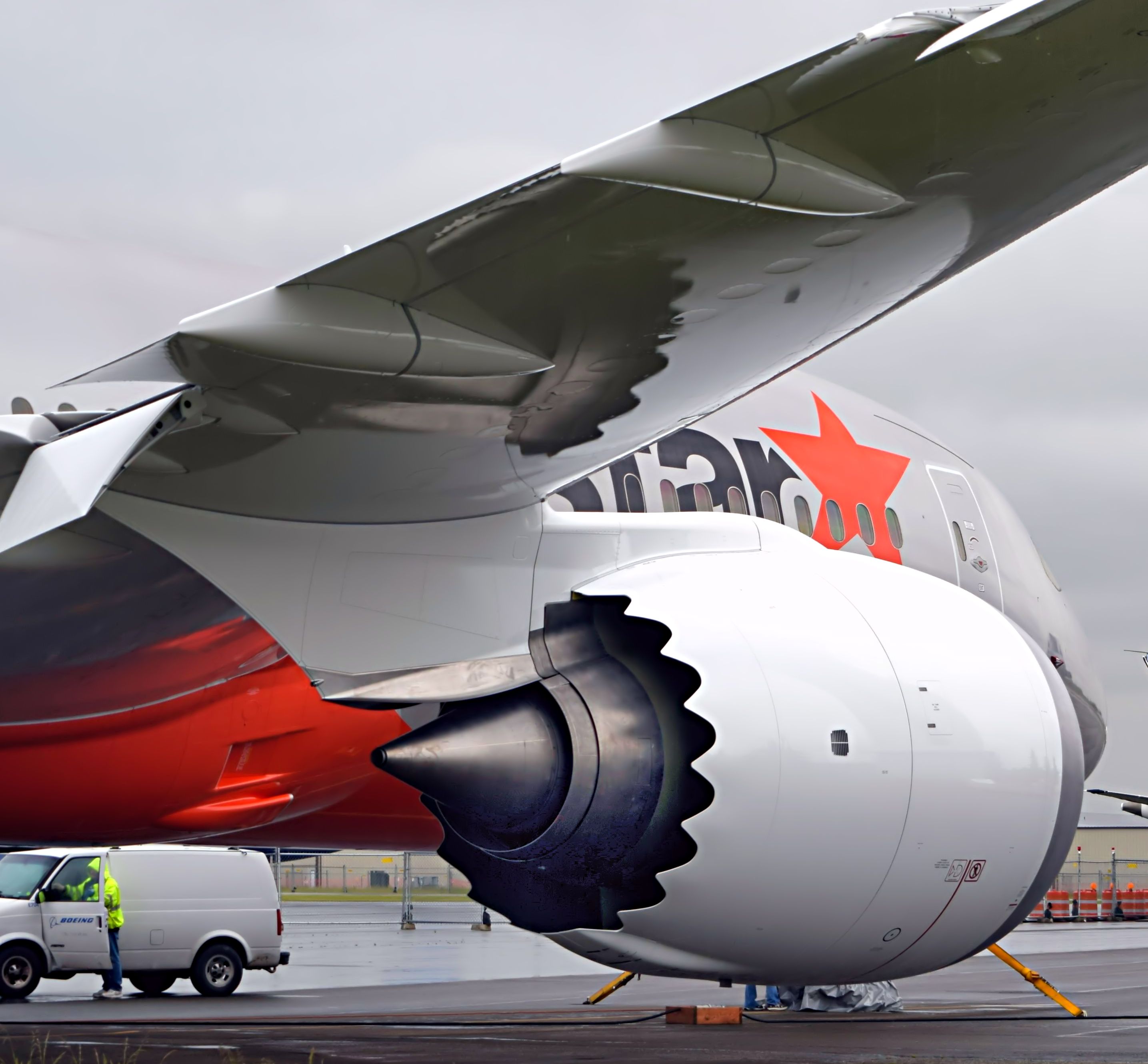Such a configuration would save weight on the wings, because the wings wouldn't need to be so strong to support 2 outboard engines far away from the fuselage.
You seem to be under the impression that the fuselage supports the wings. The reality is the other way around (in flight, at least.) The wings are the most efficient place to hang weight, as they are what is providing most of the lift. This is why the main fuel tanks are usually located in the wings, for example. The strength required to support an outboard engine while the plane is sitting on the ground should be relatively small compared to the strength required for the wings to support the weight of the entire fuselage (including your proposed tail-mounted engines.) Aircraft with tail mounted engines actually need a heavier wing spar, not a lighter one.
It's also important to note that aircraft with 4 engines nowadays are usually very large aircraft with very large engines, such as the 747-8 and A380. Engines of this size would be very difficult to mount from the tail, especially with the modern high-bypass turbofans and their enormous diameters. Think of a GEnx with 2.8 m / 111 inch diameter fan, for example. This would require strengthening the fuselage as well as the wing spars and would also wreak havoc on the center of gravity. Having twin tail-mounted engines would also probably require converting the plane into a T-tail, which causes yet more engineering problems for an aircraft that large. The bending moments on the engine mounts would be enormous, too.
Can you imagine this hanging from the side of the fuselage? Note the size of the engine compared to the size of the van parked beside it.

GEnx hanging from a 787 wing Source: Wikipedia
It is usually only much smaller aircraft that have had tail-mounted engines. This is done largely to allow them to keep the wings low to the ground. For larger aircraft, there's usually already enough clearance under the wing to mount the engines anyway or, at least, the increase in wing clearance needed to wing-mount the engines is not as much as would be needed in a smaller aircraft. Of course, for high-wing airplanes, clearance is also not an issue and most of these do indeed wing-mount the engines, even on small regional jets. For example, the Avro RJ-100:

SWISS Avro RJ-100 with wing-mounted engines Source: Wikipedia
The question Why do large aircraft have their engines mostly on the wings, while smaller ones tend to have them in the tail or the tip?Why do large aircraft have their engines mostly on the wings, while smaller ones tend to have them in the tail or the tip? provides more detail on this. As usual, Peter's answer is informative and there are other good answers, too.
